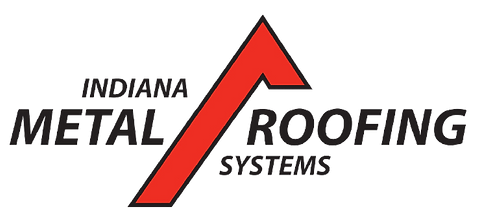The arrival of the first snow in Indiana may look beautiful, but it signals the need for homeowners to prepare their roofs for the challenges of winter. A thorough roof inspection is essential to ensure your home is protected from heavy snowfall, ice, and other winter-related hazards. At Indiana Metal Roofing Systems, we recommend conducting a detailed inspection at the beginning of the winter season to avoid potential costly repairs later.

Inspect Your Attic First
Start your inspection from inside your home, focusing on your attic. Proper insulation and ventilation in the attic are key to preventing heat loss and the formation of ice dams. Ice dams occur when heat escapes from the home, melting snow on the roof. The water then refreezes near the eaves, potentially leading to water damage. Look for any signs of moisture, such as water stains or mold, and check the attic’s insulation.
Avoid Ice Dams by Checking for Proper Ventilation
Poor attic ventilation leads to ice dams, which damage both your roof and home. Ensure airflow is optimal by inspecting soffit and ridge vents, and make sure there are no obstructions.
Assess Your Roof from the Ground
Before climbing up to inspect your roof, do a preliminary assessment from the ground. Look for missing, damaged, or loose shingles, which can become entry points for moisture during winter storms. Use binoculars to get a closer view of hard-to-see areas without needing a ladder.
Did you know?Around 35% of roof leaks are caused by loose or missing shingles, which can become worse in cold weather. Spotting these issues early prevents expensive repairs later.
Clean Gutters and Downspouts
Clogged gutters and downspouts are a leading cause of ice dams. As debris such as leaves, dirt, and ice build up, water can back up and freeze, forming large ice dams that trap water on your roof. These can eventually cause leaks. To prevent this, clear your gutters regularly before the first snow and during the winter months. Ensure that water flows freely to avoid ice formation.
Inspect Flashing and Seals
Areas where your roof meets chimneys, vents, or skylights are particularly vulnerable to leaks. Examine the flashing around these structures to make sure it’s securely attached and free of cracks. If you notice any loose or deteriorating seals, repair or replace them to prevent water from seeping into your home.
Remove Icicles and Watch for Ice Dams
Icicles hanging from your roof may look charming, but they are often a sign of poor attic insulation or ventilation. Ice dams can cause significant damage to both the interior and exterior of your home. Carefully remove icicles as they form and take steps to prevent ice dams by improving your attic’s insulation or installing heat cables.
Check for Leaks Inside Your Home
After inspecting the exterior, be sure to check inside for any signs of leaks. Water stains on the ceiling, mold growth, or damp patches are all indicators of a roof leak. Addressing these issues quickly will prevent more serious damage to your home's structure and interior.
Trim Overhanging Branches
Heavy snow can accumulate on branches hanging over your roof, adding unnecessary weight. If those branches break, they could fall onto your roof, causing damage to shingles or gutters. Trimming back any overhanging branches before the first snowfall will reduce this risk.
Frequently Asked Questions (FAQs)
1. How do I know if my roof is ready for winter?
You should inspect your attic, clean gutters, check for missing shingles, and ensure proper ventilation. If you’re unsure, consult with a professional roofer for a thorough inspection.
2. What causes ice dams?
Ice dams form when heat from inside your home melts snow on your roof, which then refreezes at the eaves, causing water buildup. Proper attic insulation and ventilation help prevent this.
3. Can clogged gutters damage my roof?
Yes, clogged gutters can lead to water buildup, which can freeze and form ice dams. This can cause leaks and damage to the roof structure.
4. How can I remove icicles safely?
Icicles should be removed carefully to avoid damaging your roof or gutters. You can use a long-handled tool, such as a broom, or call a professional for help.
5. Is it necessary to inspect my roof every winter?
Yes, inspecting your roof annually before and during the winter helps catch issues early, protecting your home from weather-related damage.
Conclusion
A comprehensive roof inspection before and during the winter months can prevent many of the problems associated with snow, ice, and freezing temperatures. By following these steps, you’ll be able to catch potential issues early and take the necessary actions to keep your roof in top condition. Should you notice significant damage or require a more in-depth inspection, Indiana Metal Roofing Systems is here to help.
For more details on the superior benefits of metal roofing, click here to learn why metal roofs are considered a wise investment.

コメント